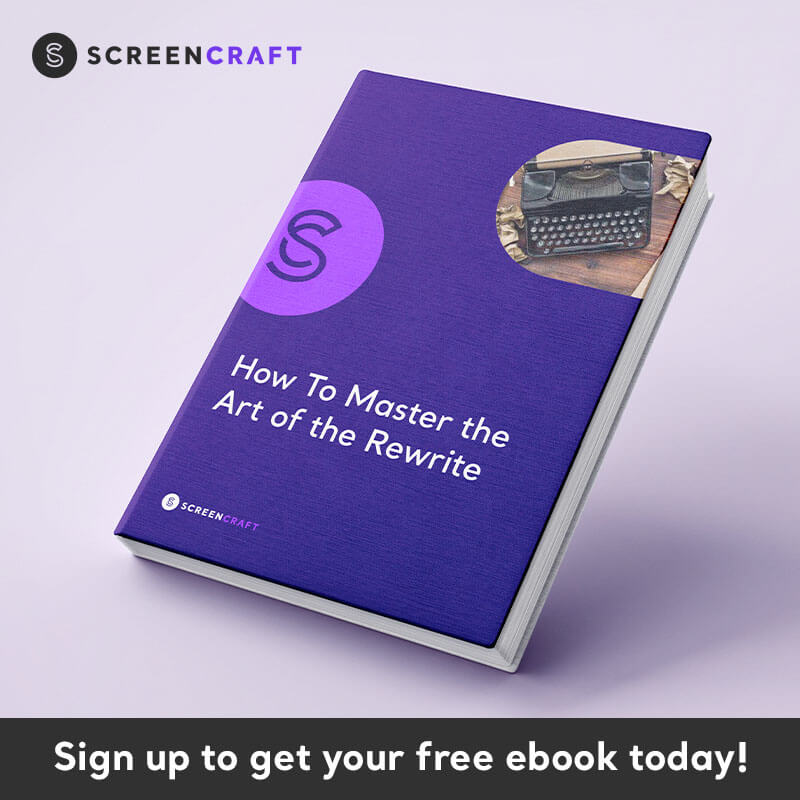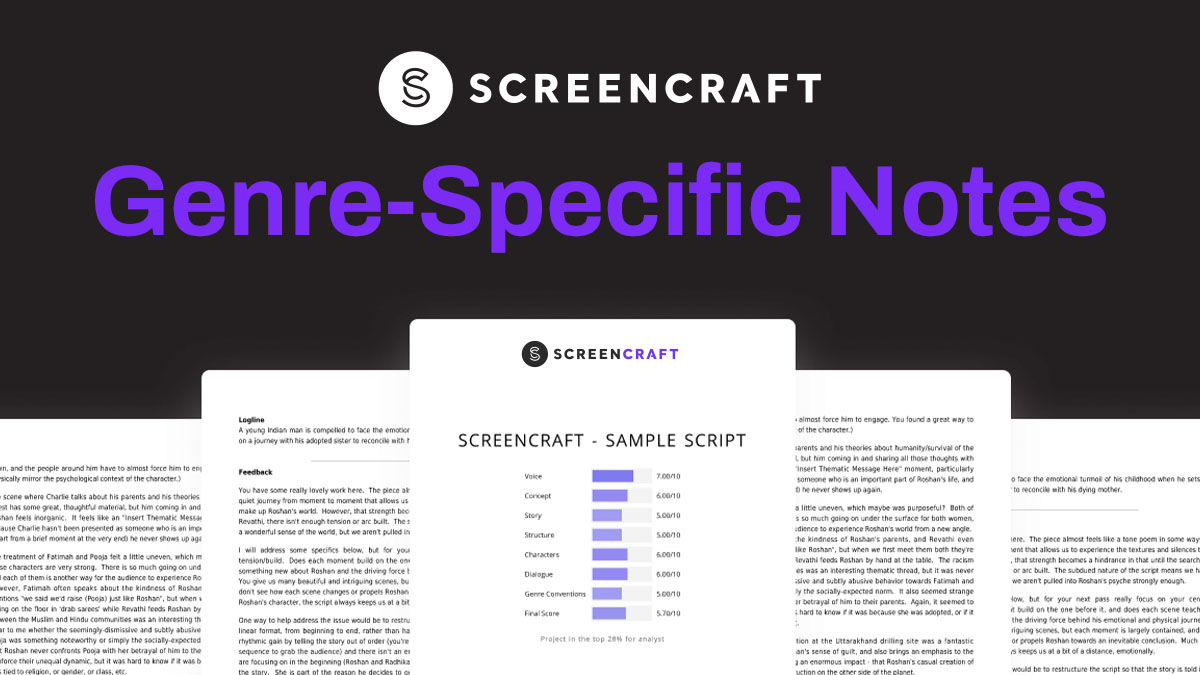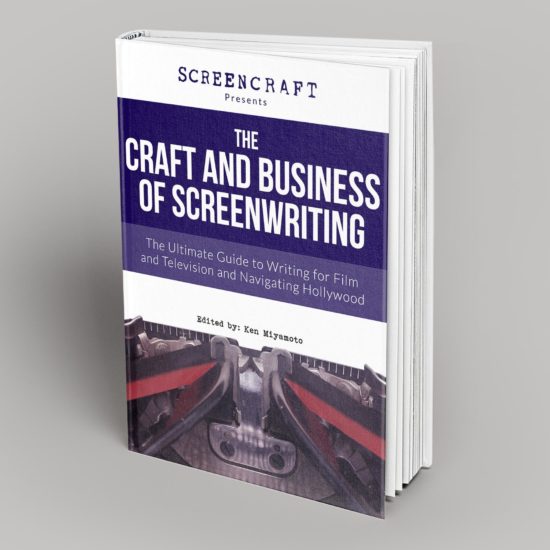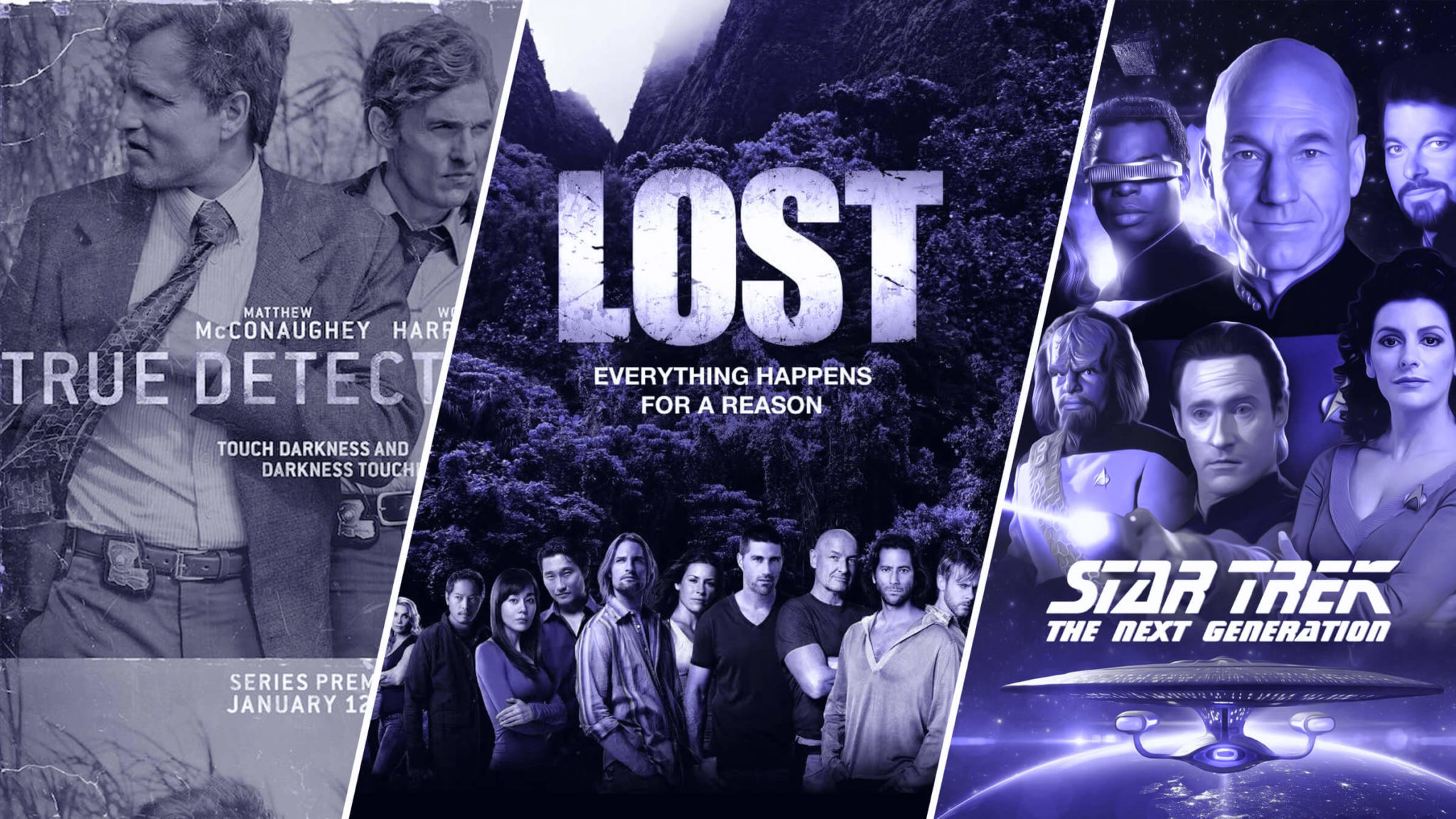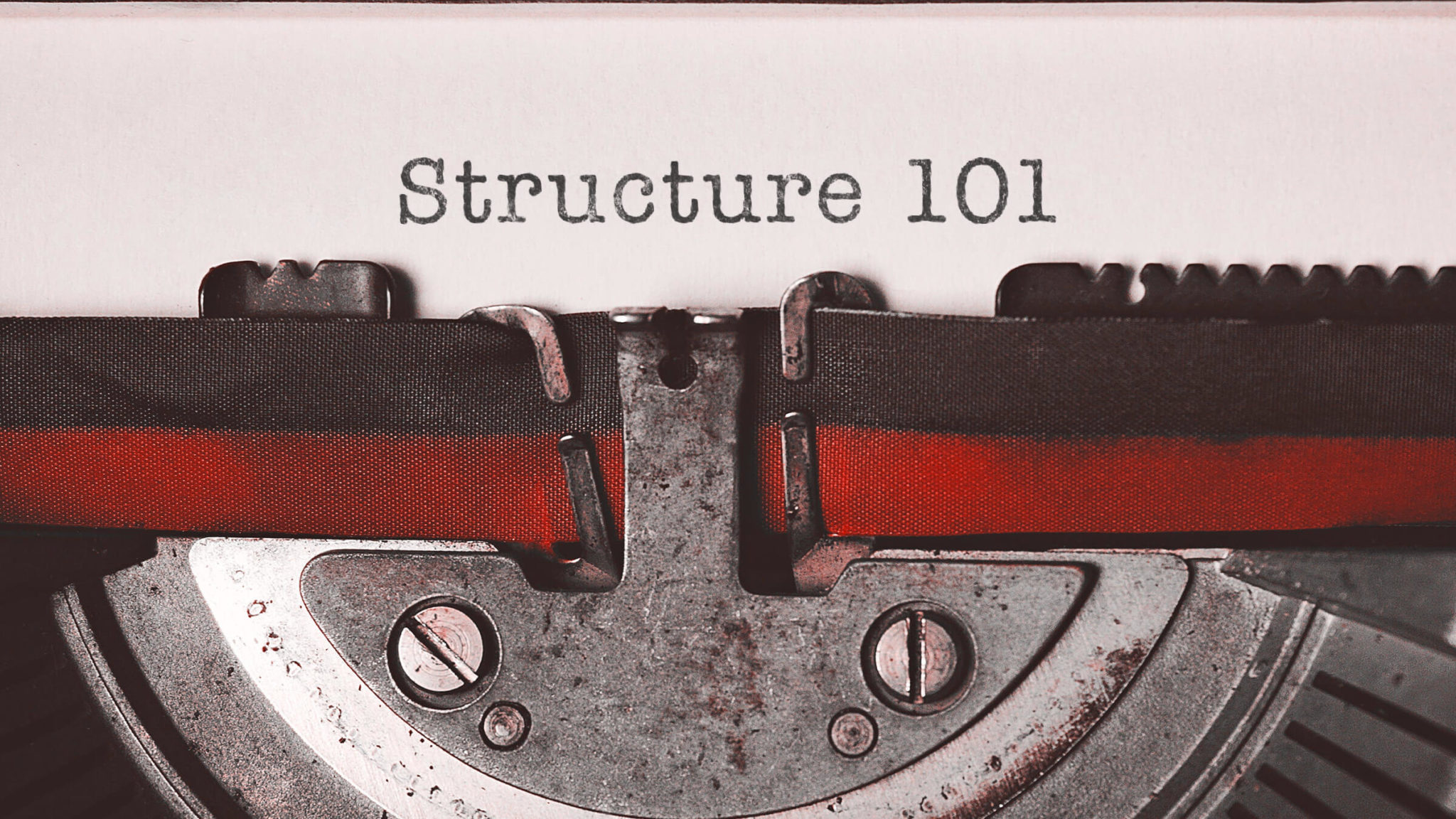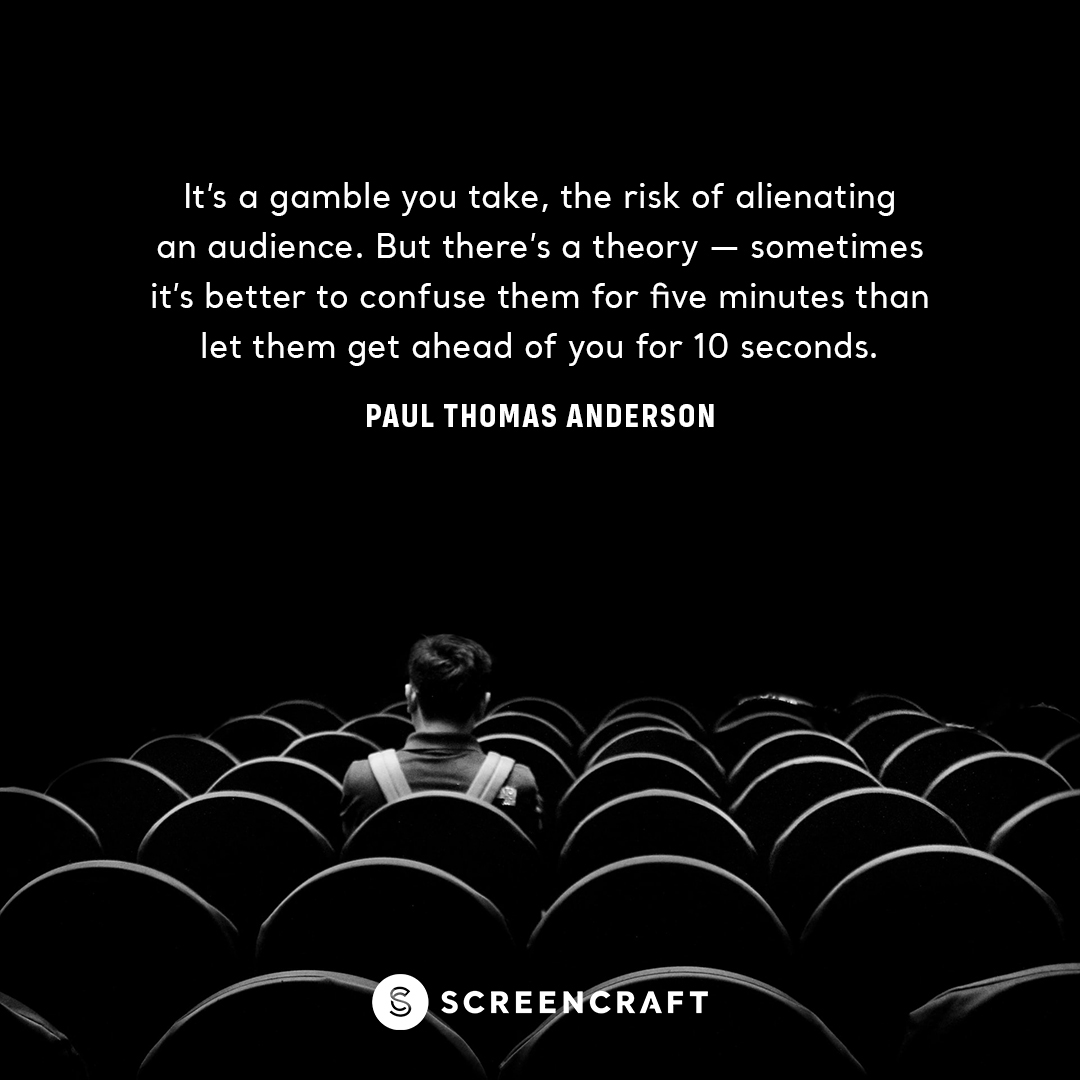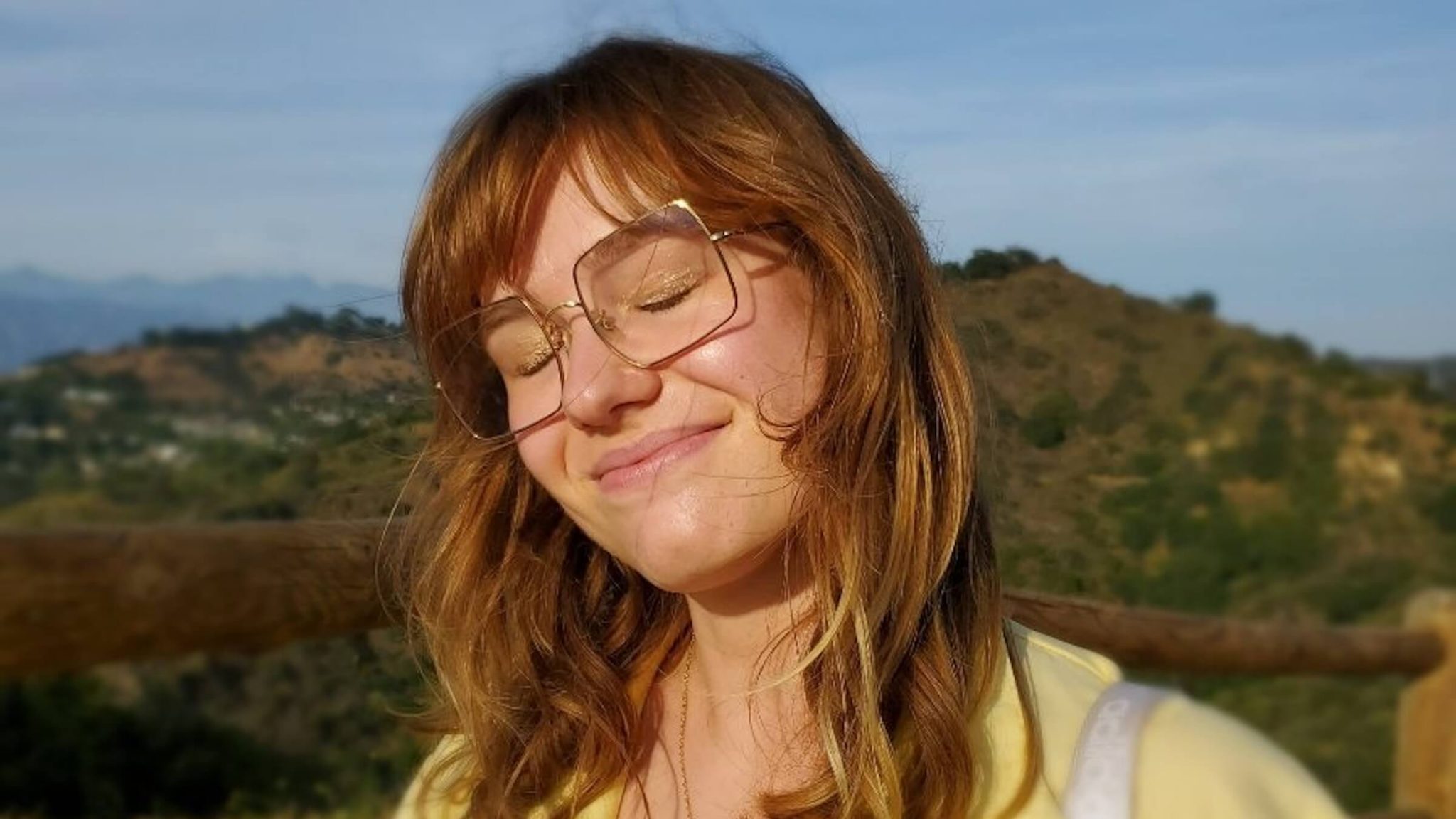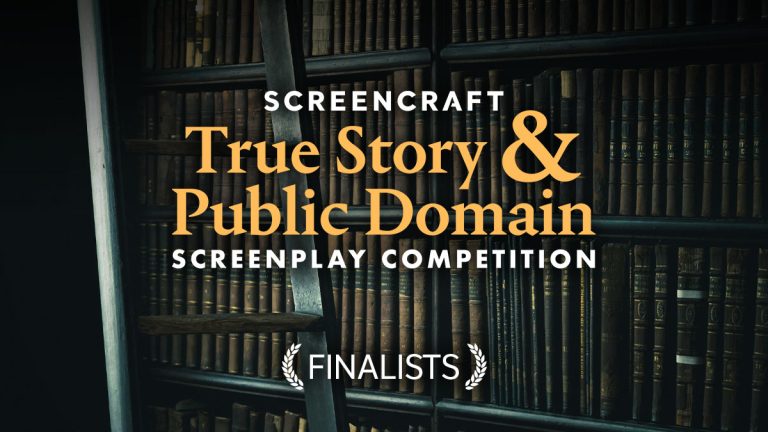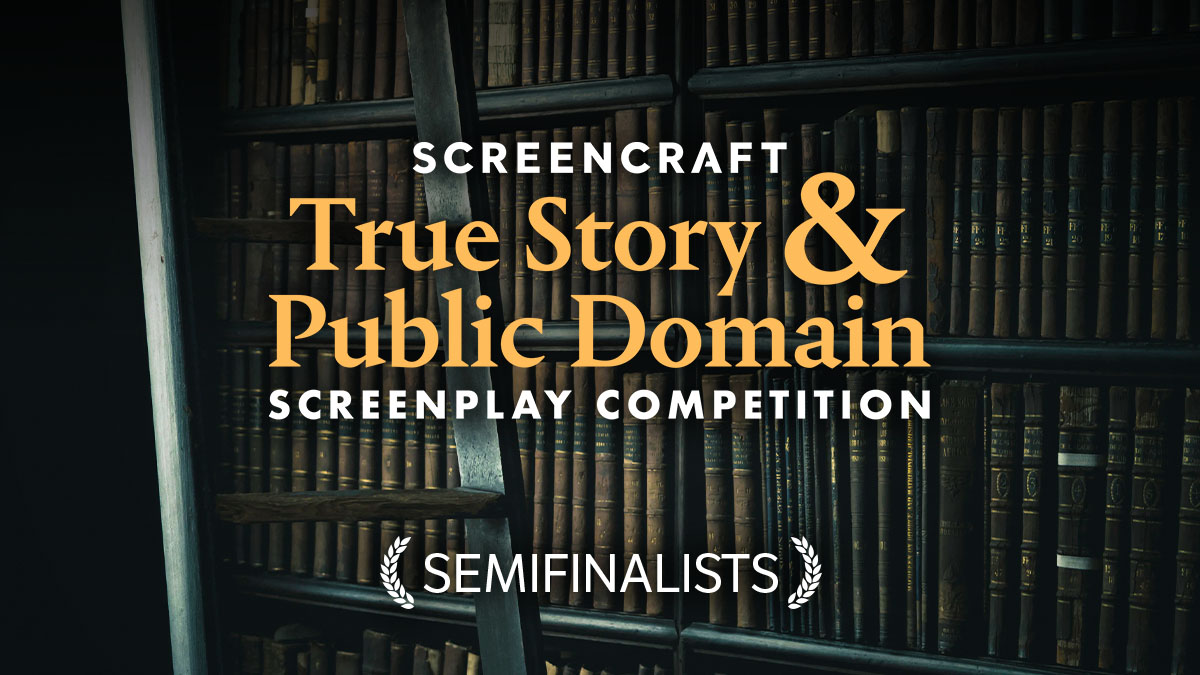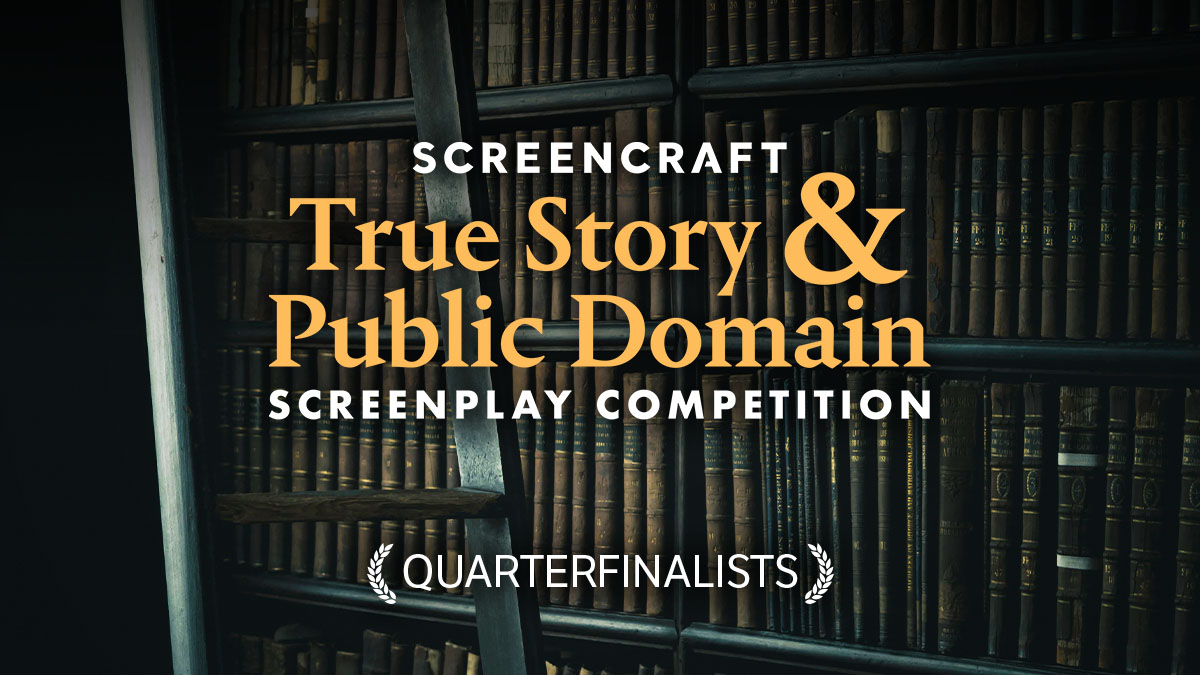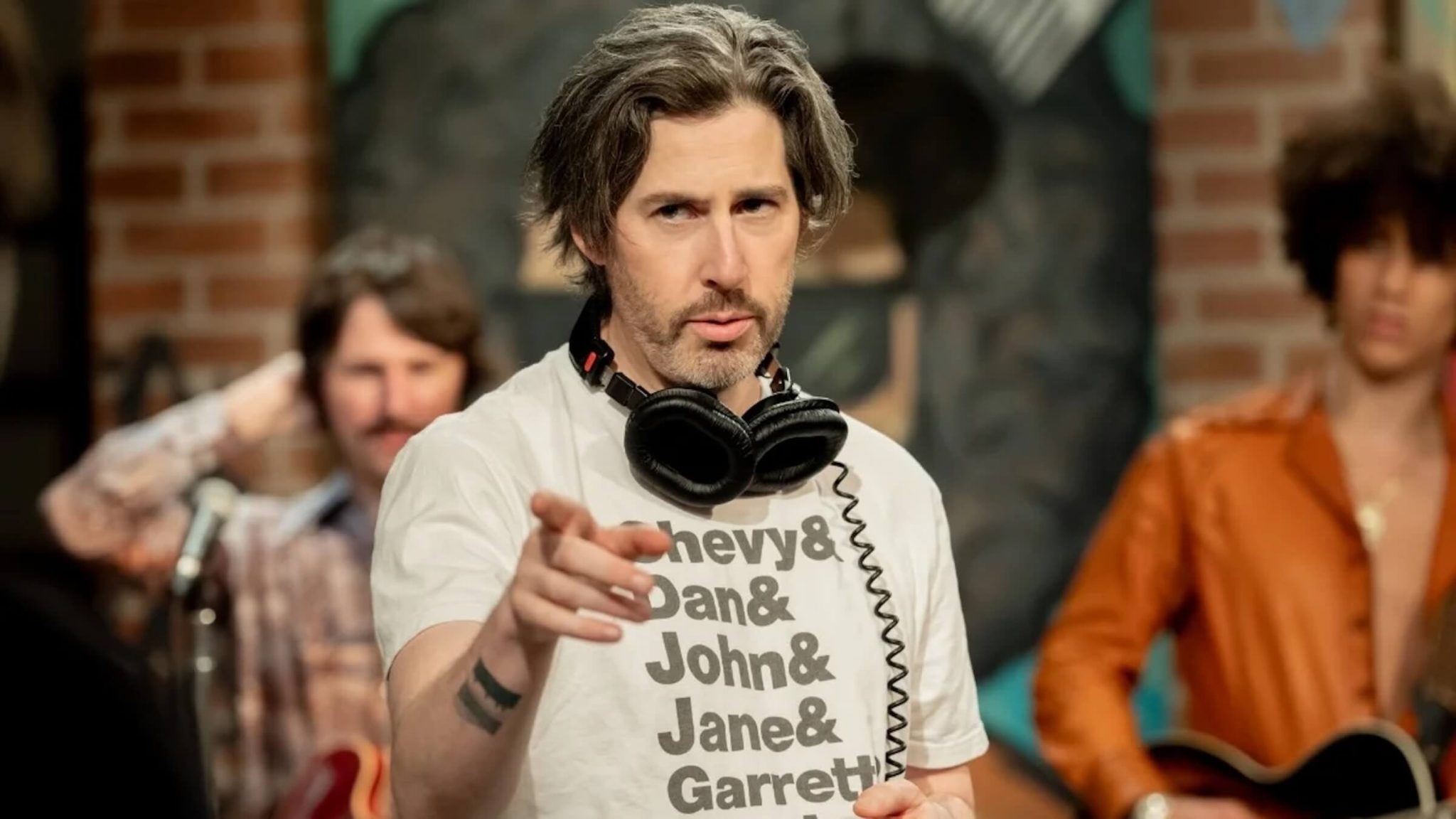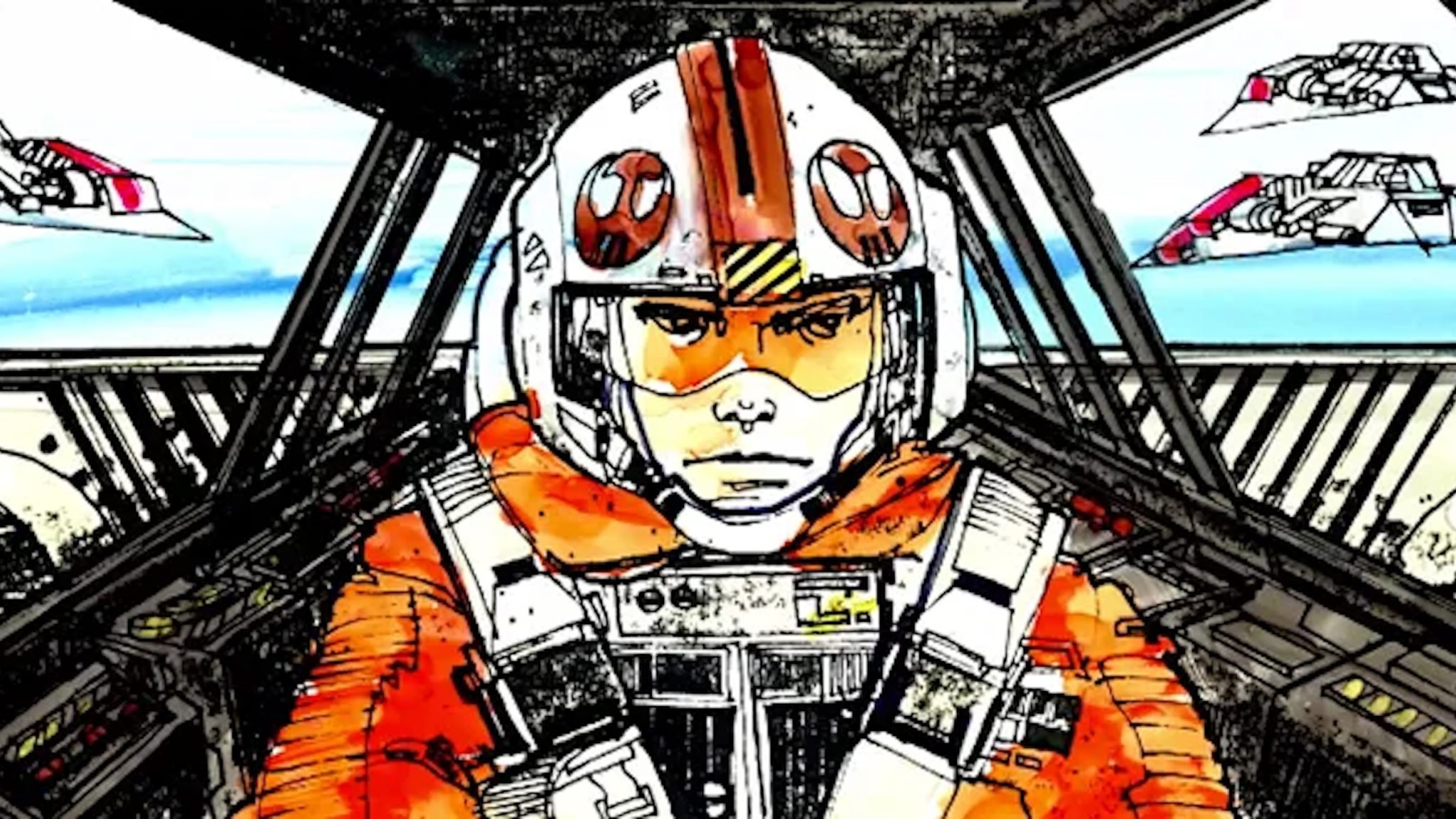5 Things Screenwriters Should Know About Public Domain

Ahead of the launch of our upcoming Public Domain Screenwriting Competition, we are sharing this guest post from Christopher Schiller, ScreenCraft contributor and entertainment attorney, licensed and practicing in New York:
Breaking in as a screenwriter is hard.
On the business side of things, you are asking a stranger to give you a considerable sum of money for roughly 90 pages of stuff you made up. And that’s with the understanding that they’ll find and spend even more considerable cash to make a movie or TV show out of it and eventually, hopefully make back at least enough money to start the process all over again. That’s a highly risky endeavor. Any way a producer can mitigate those risks will make the process a little easier to swallow, and therefore, make your project more attractive to take on in the first place.
Basing a movie or TV show on material with proven, built-in audience familiarity is a time-tested way of mitigating risk in the entertainment industry. It’s the strongest force behind every sequel and franchise movie hitting the screens nearly every week. It may be lamented by the artists who want to bring something completely unique to the screen, but, from a producer's perspective, it’s often easier to make money from what has already proven to work than to coax money to back an unproven quantity.
That said, writing based on a preexisting property has its own risks and problems. For one, it’s usually someone else’s property, and you taking it and making something new is infringing on the property owners' rights of doing that themselves. They’ve dug the groundwork and planted the seeds that you are attempting to harvest. There are laws--very strong laws--in place to protect those ownership rights, as there should be. You’ll rely on those same laws once your career takes off to protect your own work from being farmed by someone else.
So the conundrum is, a known and loved previous work will make your new screenplay easier to sell, but laws like copyright are in place to prevent anyone except the rights owner from being able to adapt old work into new. There’s got to be a way around that, right?
There is. But it also comes with peculiarities, limitations and things you have to keep in mind to be able to achieve the goal. And that goal is making your work easier to sell, right? One proven way of getting around these ownership issues of previous works is to farm the public domain for source material.
1. What is the Public Domain?
I go in depth about what the public domain is in my regular columns over at ScriptMag.com, but, I’ll give a brief overview here. With regard to the control and ownership of creative works, who has the right to determine what can be done to a work and the when, where, how and whatnot of that control is an important factor. When someone attempts to do something with a work controlled by someone else, they are said to be infringing the rights of the works owner, and laws are in place to protect those rights.
However, when a work is determined to be in the public domain, it is not owned or controlled by anyone. Or, looked at another way, every member of the public has the same right to do whatever they’d like using that public domain work.
A reality that few people realize is that the default state of any creative work is to be in the public domain. It’s from the belief that eventually, every creative work belongs to the people and the societies that are enriched by its existence. It is only the exceptions (and there are a lot of them) that will hold out that eventual outcome for a period of time for some categories of works. Some works are immediately found to be in the public domain at the instant of their creation. Other works are owned by their creators or their heirs even after their death for a period of years. There are even a very few works that have been specially set aside to never fully fall into the public domain.
You may get an inkling that I’m being a mite vague about the boundaries of what is and is not in the public domain and you’d be right, but I’m not playing coy; it truly is a very complex subject matter to get right. For example, every jurisdiction (usually countries, but could be other political boundaries) has set up their own laws to establish the parameters of public domain and those can differ considerably in application.
Some countries establish ownership (e.g. copyright) for far shorter periods than other countries. Depending on where the work or the author of the work was born, a copyright could last for 50-100 years after the death of the author before it falls into the public domain. Or it might not depend on any aspect of the creator and instead be a span of time from the creation or publication of the work which could vary from 90 -120 years. And jurisdictions differ on the treatment of exact same works when they cross borders. For example, an off-the-cuff, unprepared but eloquent speech given by someone could qualify for copyright protection in one country and be immediately in the public domain in another AT THE EXACT SAME TIME.
And, since movies have a global audience, if you are attempting to write a screenplay that relies on a public domain source you’ll need to understand whether that source is in the public domain everywhere the film might play. As I said, it’s complicated.
2. Why is Understanding Public Domain Important for Screenwriters?
By now you might be thinking, that’s too much trouble to think about--I’m only writing a screenplay. I’ll let the sucker who buys it from me worry about all that. One problem with taking that approach is that you are attempting to break into a profession. A profession where the stakes and compensations are set at a very demanding and rewarding level for those that take things seriously. How would it look to someone who makes their living buying screenplays and making films if the person who sits before them hasn’t bothered to do things the right way? Cutting corners and pushing off your responsibilities on others isn’t the way to make a good impression in a job interview. And in essence, a spec screenplay is exactly that, a job interview. This is the first stage in your career path towards being a working, professional writer. Do you think going half-ass is all that wise a call?
3. Public Domain and Copyright Law is Complicated!
So let’s say you do want to take things seriously and present your best foot forward. As I have said, the public domain source material road is a complex one. What happens if I try but missed something? What’s the worst that could happen if I gave it my best but overlooked someone’s rightful claim? Well, if someone has a legitimate copyright in the work you’ve based your screenplay on, it depends on the jurisdictions that are involved as to what specifically could happen. But it could be incredibly severe. At the very least you would likely suffer the loss of all profits you or anyone else has made with the infringing work, for the life of the work. You may be required to pay fines. Even if you haven’t made any significant profits yet you could still be liable for statutory damages- meaning a cost estimate of the potential loss to the owner because of your infringing work. Those fines and damages could be huge, in the hundreds of thousands of dollars huge. Your work might be required to be destroyed and all your hard efforts writing it would have gone for nothing. And, in criminal cases, you could go to jail.
4. Why Public Domain is a Powerful Tool for Screenwriters, Despite its Complexity:
With all these difficulties you may be asking yourself why should I even bother? I mean, if you write well, that should be enough, right? So I’ll just keep everything original and well written and I’ll be raking in the dough soon enough. Sadly, quality writing isn’t a sound investment strategy on its own. Investors want to know the risks they’re taking on. With an unknown writer with unknown material, the risks are unknown as well. One way of lessening the risk is to travel down proven paths. That attitude runs through the gamut of filmmaking.
Genre films are big because they prove that a film in the same vein has a market expectation. Casting stars who have proven their worth in other films is another way of couching the risk of making a film. For these levels of risk mitigation, a certain percentage of the audience would be enticed to see the film on the poster or trailer alone. It’s just like something else they’ve seen and liked.
The same goes for scripts. If you have a proven screenwriter with solid, profitable previous work behind them, the risk of investing in the writer’s next outing is a much better bet. Even better, a script based on a recent, popular work...say a novel or franchise film...pretty much guarantees that there is a film-watching audience awaiting that film with pre-built anticipation. “Based on” is a big draw. It carries proven market potential. It is safer to dip from a proven well.
But if you are a new writer or haven’t yet established that people will flock to the theaters to see your name under “written by” then you have to turn to other devices to help the money people see you as a less risky option to try. Since getting the rights to write an adaptation of a hot, new novel or sequel to the blockbuster movie just hitting the screens is an unlikely scenario, one option to try is to adapt a public domain work. Chosen well and done superbly you can deliver a much less risky morsel to dangle in front of the hungry producers looking for the next big hit.
5. How do I Choose Public Domain Sources the Right Way?
Steps to keep in mind, a checklist, if you will:
DO YOUR RESEARCH.
As was mentioned above, every jurisdiction has differing ideas of what is and isn’t in the public domain. And those ideas have changed over time. There are general trends, but there are always exceptions in both directions. Some people say that things written before 1923 are in the public domain, but that’s not completely true and is only true when it is for U.S. works. Adapting Peter Pan for the stage? Sorry. That’s still protected. (Specific case yes, but that’s the point. Something similar could bite you if you don’t do your research to make sure it doesn’t.) Also consider not only your home country or the country of origin of the material in question, but all other relevant countries the resultant film might be played in. There are international treaties that allow many countries to treat foreign works similarly to works from within their own borders, but that doesn’t always apply to every country or work.
And you can be surprised by things that are available in the public domain long before you’d have expected. The original Night of the Living Dead film? It’s in the public domain because of a missed quirk of the requirements for copyright protection when it was released. Quickly fixed (as best as they could) by the filmmakers by a quick remake. Whatever you think you might want to use for your source material, at least look into it before making assumptions that it’s not available. (But don’t start writing until you do.)
CHECK WITH OTHERS AND DON'T RELY ON HEARSAY OR "COMMON KNOWLEDGE".
There are plenty of people on or off the internet who will give you their opinions about what is and isn’t public domain. Don’t rely on folk wisdom or “a friend of a friend” assurances. When you get serious and have looked up all sources you can, make sure to get an expert opinion or two. Copyright attorneys may be expensive (hey, so’s a good plumber when you need one) but it is their job to know this stuff. You might not be able to get a 100% certain determination depending on a lot of things (how much you can afford to look into it, how readily available the information is that determines these things, mistakes in the records, etc.) but trying as much as you can helps assure everyone that you are trying to do the right thing first.
MAKE IT ORIGINAL.
Differentiating your work from the original one is smart in several ways. One, it makes your work more valuable and your contributions stand out apart from the source. This is good for protecting your own work and establishing your reputation (which is one of those things you should be doing with your career anyway, right?) Second, it allows you to stand apart from other adaptations that are based on the same sources. Getting too much like things that have come before can be… problematic.
DO NOT IMITATE.
If you find a good public domain work, it is likely that others have adapted that material before you. Don’t be complacent and just follow in their footsteps. Not only does it help your career to set yourself apart from those works, but, those works of other adapters are protected works for what new they’ve brought to the storytelling. Nearly all of Walt Disney’s feature-length animated movies are adaptations of public domain sources – Snow White, Cinderella, etc.
You can write your own version of one of those ancient stories basing your adaptations on the original works. But be careful! If your new work borrows from anything that was original to the Disney films (e.g. the glass slippers of Cinderella – the original work’s shoes were silver,) then Disney’s rights would be being infringed upon and Disney is highly protective of its rights. Other public domain works have similar pitfalls. Some of Sherlock Holmes stories are in the public domain, but the later ones still are protected. If you write a Sherlock Holmes story and use characters or events that appear only in the later works, you’re in trouble. And if you give him his iconic cap or pipe, you’re infringing on the films that established those items (they don’t appear in the original stories themselves.)
But there are aspects of the story that will need to be conveyed in your new work that contain the essence of the public domain source. Those elements will appear in other people’s takes on the work, as well as yours. The law allows these commonalities as scenes-a-faire, meaning elements that are required by the genre or source in order for the audience to make the connection. Things like pirates being mostly males living aboard ships, wearing pirate garb (practical for a life at sea) and speaking as they do with nautical jabber...these elements are required to set the scene and are familiar and expected by the audience, so one author’s work can’t claim them as original to theirs alone.
DO NOT GET DISCOURAGED.
The harder the task, the more likely that others have tried and given up, so your success would be unique. Also, it proves your mettle as a writer that you can slog through the complex and come out with something cinematic and worthwhile in the end. That’s a marketable skill.
DO NOT BE INTIMIDATED BY OTHERS TAKING THE SAME PATH.
As was said, choosing to write from public domain sources means that there will likely be others who had the same idea of a starting point. Don’t fret about that. If you stick to your guns about being original and finding your own voice, your telling of the story will be different and stand out. You often see Hollywood come out with two films with the exact same public domain source one after another. Each is a different telling and both hope that there is enough interest in the subject matter to buoy both box offices.
Good Luck!
Writing is a hard task. Basing your next script on a verified public domain source gives you a leg up at the bargaining table as an unknown or newly established writer...but you still have to deliver a great story and clear all the other hurdles to getting your creation on the big screen. Good luck! I’m rooting for you.
Want more? Read Public Domain Q&A with Entertainment Attorney Christopher Schiller.
Christopher Schiller is a NY transactional entertainment attorney who counts many independent filmmakers and writers among his diverse client base. He has an extensive personal history in production and screenwriting experience which benefits him in translating between “legalese” and the language of the creatives. The material he provides here is extremely general in application and therefore should never be taken as legal advice for a specific need. Always consult a knowledgeable attorney for your own legal issues. Because, legally speaking, it depends... always on the particular specifics in each case. Follow Chris on Twitter @chrisschiller, his website, and Google+. Read more of his articles here.
Tags
Get Our Screenwriting Newsletter!
Get weekly writing inspiration delivered to your inbox - including industry news, popular articles, and more!

